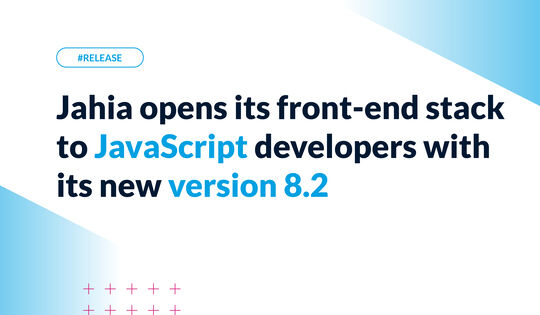Live From The First UX/Dev Summit: Bridging User Experience And Front-End Development

You probably have not yet heard about the UX/Dev Summit, since it is the first time this three-day conference is being held, but it is a leading-edge event that will surely be gaining momentum.
User Experience focuses on the psychology behind creating compelling and professional applications while Front-End Development is the technological foundation for assembling a modern web application. As Ignacio Garcia-Huidobro put it, there is a growing need to converge the world of user experience and front-end development, as understanding and communicating between those communities will help deliver better products and, ultimately, better user experiences.
I believe that a lot of developers are excellent at delivering products and solutions, but are not that familiar with the difficult task of fully understanding who their user is and what does and does not work for them. User experience and usability testing are fields that have, for a long time, been too separate (mostly in time) from the world of development. Bridging that gap is an important evolution that is crucial to the success of any enterprise. For a majority of developers present at the event, it was very interesting for them to learn more about the world of user experience, what can - and is - done about it currently, and how it can help them build better products (or, conversely, avoid the mistake of spending time on non-relevant features).
On the other hand, user experience designers also need to understand why it is that developers are working a certain way, to help them better design solutions that will both be good for the users but also learn about some possibilities or limitations that they did not know previously. An event such as the UX/Dev Summit also helps developers directly learn about some of the technologies and best practices that exist or are upcoming, which could help them both in their current or future designs.
Ignacio also talked about the “unicorn” - the ultimate UX developer that everybody will want to hire. I have met my share of developers that are really passionate about user experiences as well as designers who are very interested in development so, strangely, that mythical beast might exist after all! It is not necessarily a requirement to have both skillsets in a single human being as a team of a designer and a developer could work just as well (if not even better). In his keynote, Michael Vargas talked about the essentials of this new type of ‘pair programming’ which no longer applies just to the world of programming.
Marcella Missirian also gave a great keynote, as well as very thought-provoking workshops, about the importance of learning how to focus on user experiences and how (and why) to build personas. Her fantastic experience in the field is a good example of the benefits that come from a UX-oriented focus for building successful projects. Building personas is a technique a lot of developers are not at all familiar with, and I believe that gaining experience with it will help them set priorities and focus on the most important features for their end-users.
This event speaks to the heart of the work we have been doing at Jahia, where I am the Chief Technology Officer. We have been focused on user experience before the term was even coined.
For example, by pioneering web-edit-directly-on-page features and constantly trying to make web systems easier to use not only for end-users but for all the players involved in building connected solutions, we make comprehensive, powerful technology available to the entire organization. Even non-technical users can use the system via intuitive interfaces with minimal training time.
What this means is that all kinds of users, be they designers, template developers, project managers, developers, content editors, reviewers, power users, recurring users and simple visitors may all see their experiences directly customized by our products and platforms, with minimal intervention needed by third parties. For example, using our digital experience (DX) platform, it is possible for a template designer to perform changes such as allowing a new column to be used in content editing simply by using our Jahia Studio. This change requires no need for any intervention by a developer (either front- end or back-end) or even a system administrator (although these roles can prevent this action, of course).
In my keynote, I talked about the real world story of using both Angular and Apache Unomi to build our new Marketing Factory product. We went through a thorough selection process when choosing technologies for our new user interface and, in terms of UX development with the focus being to make sure we could get a solution delivered very quickly. Angular has proven more than fitting for the very ambitious goals that we had for Marketing Factory. It is certainly far from perfect but the Angular development team is hard at work on Angular 2 which will solve most of the quirks of the first version.
When designing new user experiences, selecting tools that make it very easy to prototype, test and redesign is essential. Most of the new breed of front-end framework can really help you test ideas quickly, iterate and, finally, deliver top-notch experiences that would not have been possible a few years ago. We, of course, also believe that DX can play a big role in helping user experience developers and designers achieve their goals faster.
Also, some of these tools, such as Angular Material, will also help you deliver solutions that scale well from a desktop to a mobile phone look and feel. This type of flexibility is nowadays no longer a nice thing to have but an actual requirement if you want to reach audiences that may range from senior citizens to a four-year old using an iPad.
Apache Unomi is potentially the ‘killer’ application that people need to learn about for data protection. With its built-in tracking and data privacy features, it makes it very easy for integrators to augment their current user experience with everything they need to better target their users. At the same time - and this is unique to Unomi - integrators have maximum control about how the data is collected and what they can do about it. Everybody wants more control over their data now, and getting the user trust back at the center of the value proposition is the ultimate good user experience. This summarizes what Unomi can do for digital enterprise.
Altogether, I believe that the UX/Dev Summit is off to a great start. And I really look forward to the next edition! If you didn’t make it to this year’s event, make sure you don’t miss the next one - or you might well be missing out on one of the most important events of the year. (Apart from our Jahia Experience events of course!) :)


